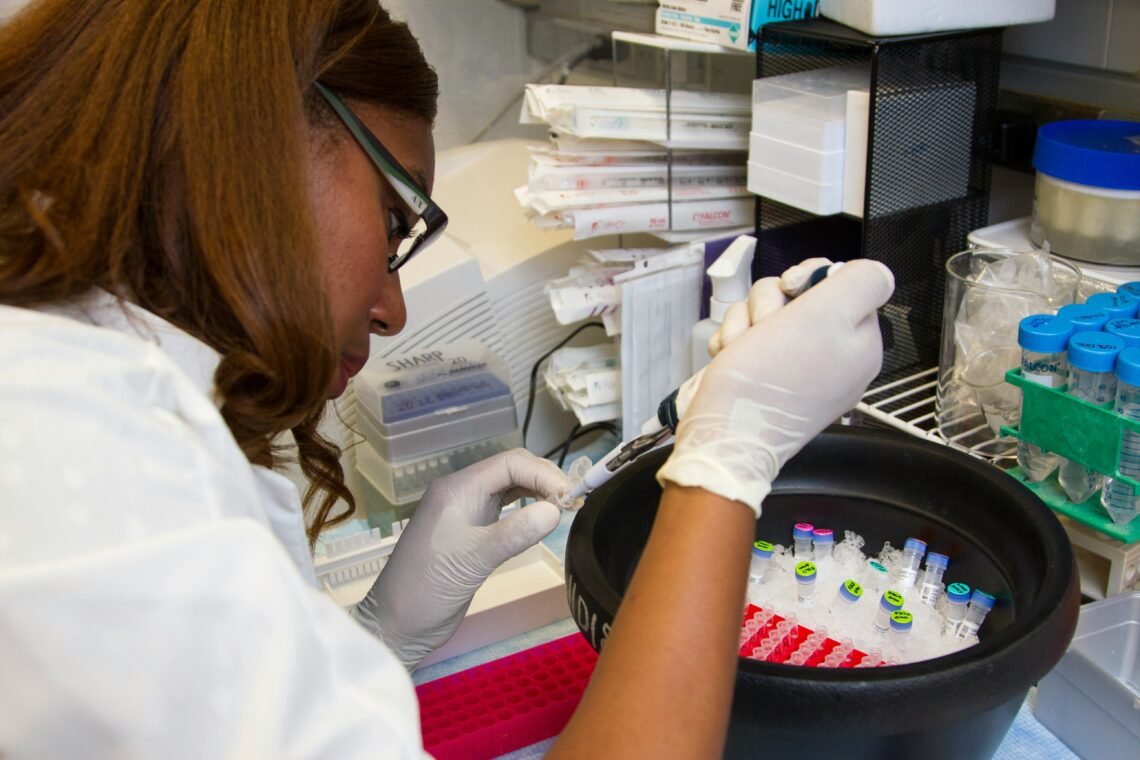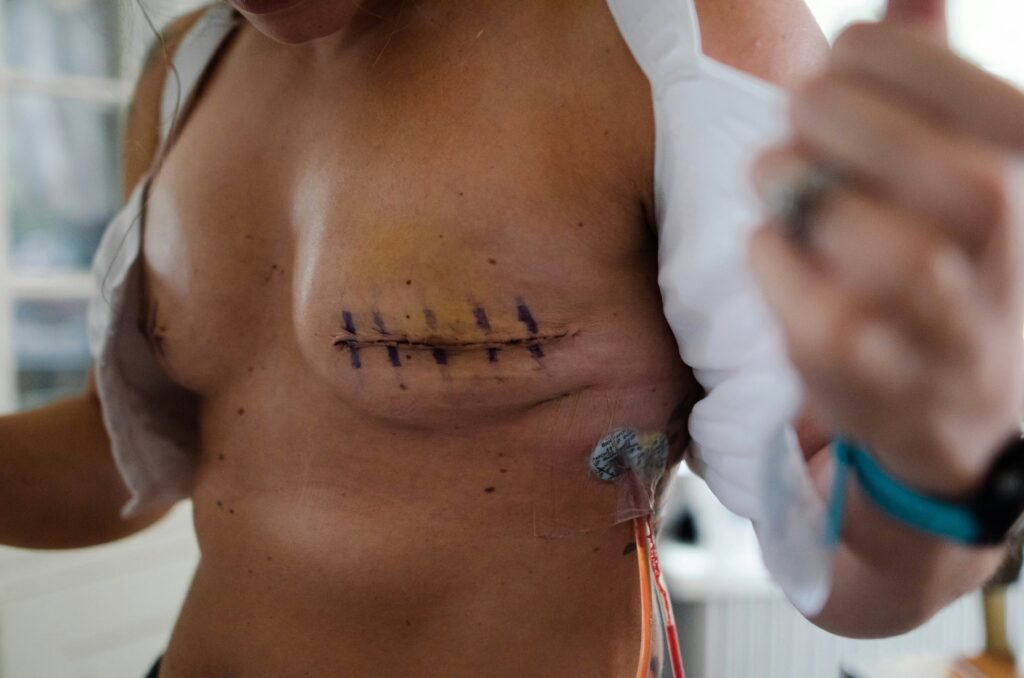
Closing the Gap: Breast Health and Mammography for Black Women
Introduction to Breast Health

Breast health is more than a medical concern; it’s a profound act of self-care and empowerment. It involves embracing practices and procedures that safeguard your well-being and ensure that your breast tissue remains healthy. Regular check-ups and essential screening methods, like mammograms, are at the heart of this vital journey, serving as your frontline defense in detecting abnormalities before they take root.
For Black women, the significance of breast health cannot be overstated. The unique health challenges and disparities faced by this community make the focus on breast care even more critical. The power of mammograms, which provide clear, X-ray images of the breast, lies in their ability to uncover potential threats long before they manifest into symptoms. By catching issues early, mammography can dramatically improve survival rates, offering a lifeline to those diagnosed with breast cancer.
Research reveals that regular screenings can lead to a 25-30% reduction in breast cancer mortality among women aged 50 and older. But for Black women, who are statistically more likely to encounter aggressive breast cancer at a younger age and later stage, the need for early and frequent mammograms becomes even more urgent. This is not just about statistics—it’s about the lives of mothers, daughters, sisters, and friends.
Understanding the life-saving power of early detection, healthcare professionals urge women—especially those at higher risk due to genetic, familial, or racial factors—to begin regular mammograms sooner rather than later. This proactive approach can make all the difference, catching cancer in its early stages when treatment options are more varied and effective.
Yet, awareness is just the beginning. There’s a pressing need to foster a culture of proactive breast health within the Black community. Public health campaigns and community outreach are essential in closing the information gap and encouraging women to take charge of their health. By breaking the silence and equipping Black women with the knowledge and tools they need, we can overcome the disparities and ensure that every woman has the chance to live a healthy, vibrant life.

This version maintains the same informational content but adds more emotional resonance to connect with your readers and emphasize the importance of the topic.ic, familial, or racial factors, begin regular screening at an earlier age. This proactive approach can significantly enhance the chances of identifying cancer in its nascent stages, thereby offering a wider array of treatment options with better outcomes.
Moreover, fostering awareness around breast health and screening methods within the Black community is essential. Public health campaigns and community outreach programs can bridge information gaps and encourage more women to prioritize regular mammograms and self-examinations. By breaking the silence and empowering Black women with the knowledge and tools to take charge of their breast health, we move closer to eliminating disparities and improving health outcomes for all women.
Importance of Mammograms
Mammograms play a pivotal role in the early detection of breast cancer, which is particularly vital for Black women who often face unique challenges in accessing healthcare. A mammogram is an X-ray procedure that screens for abnormalities in breast tissue, allowing for the identification of potential cancerous growths even before any symptoms manifest. For women aged 40 and above, mammograms are usually recommended annually or biennially, depending on individual risk factors and physician advice.

The procedure itself is relatively quick, typically taking about 20 minutes. During a mammogram, each breast is compressed between two plates for a short duration to provide clear X-ray images. While some women may experience discomfort, the benefits far outweigh the temporary unease. It is advisable to schedule the screening during a time when the breasts are least likely to be tender, such as during the week after a menstrual period.
The primary advantage of routine mammograms lies in their ability to detect breast cancer at an early stage. Early detection significantly increases the chances of successful treatment and can prevent the cancer from advancing to more critical stages. For Black women, who statistically have a higher mortality rate from breast cancer due to delayed diagnoses, the importance of regular mammographic screening cannot be overstated.
Studies indicate that mammograms can reduce breast cancer deaths by approximately 30% among women aged 50 to 69. Starting screenings at age 40 is essential for those at average risk, while women with a family history of breast cancer or other risk factors may need to commence earlier and undergo more frequent screenings. Establishing a routine mammography schedule is a crucial step towards empowering Black women to take control of their breast health proactively.
In summary, mammograms serve as a critical tool in the arsenal against breast cancer, providing early detection that can save lives. By adhering to recommended screening practices, women can ensure timely intervention and improve their chances of overcoming this disease effectively.
Different Types of Breast Cancer
Breast cancer is not a singular disease but rather encompasses several distinct types, each with unique characteristics and treatment approaches. Understanding the various forms of breast cancer can significantly impact the prognosis and treatment efficacy, especially within the Black community, which experiences disparities in diagnosis and treatment.
Ductal Carcinoma In Situ (DCIS) is often recognized as the earliest stage of breast cancer. It originates in the milk ducts and is classified as non-invasive, meaning it hasn’t yet spread to surrounding breast tissue. While DCIS is not life-threatening, it requires treatment to prevent progression to invasive breast cancer. Common treatments include lumpectomy, possibly followed by radiation, and sometimes hormone therapy.

Invasive Ductal Carcinoma (IDC) is the most prevalent form of breast cancer, accounting for approximately 80% of all cases. IDC begins in the milk ducts and subsequently invades the surrounding breast tissue. From there, it can metastasize to other parts of the body. Treatment typically involves a combination of surgery, chemotherapy, radiation, and targeted therapies, tailored to the specific characteristics of the tumor.
Inflammatory Breast Cancer (IBC) is a rare but aggressive form of breast cancer that causes the breast to appear red, swollen, and inflamed. It often starts with the cancer cells blocking lymph vessels in the skin of the breast. Due to its aggressive nature, IBC is generally diagnosed at a more advanced stage and requires prompt, intensive treatment. The standard treatment regimen may include chemotherapy to reduce the tumor size, followed by surgery and radiation therapy. Additional targeted therapies might be employed based on individual tumor markers.
Understanding these different types of breast cancer is crucial for timely diagnosis and effective treatment strategies. Each type requires a specialized approach, and awareness can lead to better health outcomes, especially impactful for Black women who face unique challenges in breast cancer care.
Personal Story: A Journey Through Breast Cancer
At the age of 44, I never imagined that my life would take such an unexpected turn. As a Black woman, I was conscious of my breast health, making it a point to schedule routine check-ups. It was during one of these routine visits that the trajectory of my life was altered forever. I visited my doctor to get a seemingly harmless cyst checked, fully expecting to leave with reassurance that it was nothing serious.
The initial ultrasound didn’t raise any alarms, but my doctor suggested a biopsy just to be certain. The anxious wait for the results felt like an eternity. Finally, the call came—a diagnosis I wasn’t prepared for: breast cancer. A breadcrumb-sized speck, hidden amidst the benign tissues, had evaded the uneventful ultrasounds and routine checks.

Coming to terms with this diagnosis was challenging. Matters were further complicated when, during a follow-up appointment, the discovery of a larger mass necessitated a more aggressive treatment plan. Faced with the reality of a mastectomy, the sense of unpredictability that cancer brings became glaringly apparent. Each step of this journey redefined my understanding of courage and resilience.
Throughout my battle with cancer, the unwavering support from my medical team, family, and community has been my backbone. Regular check-ups were my lifesaver, catching the disease early enough to make treatment possible. My story is a powerful testament to the importance of vigilance and regular health screenings.
In sharing my journey, I hope to underscore a crucial message for Black women and all women alike: routine health check-ups are not just a formality, but a lifesaving practice. The early detection afforded by mammograms can make a profound difference, offering a chance to confront the disease before it escalates. Breast cancer’s unpredictability is daunting, but knowledge and proactive health management bridge the path to survival.
Understanding DCIS Cancer
Ductal Carcinoma In Situ, commonly abbreviated as DCIS, represents a non-invasive category of breast cancer. Originating in the milk ducts, DCIS is characterized by the proliferation of cancer cells that have not yet spread beyond the ductal walls into the surrounding breast tissue. As such, it is often referred to as the earliest form of breast cancer. Early detection is pivotal, given that DCIS is highly treatable when identified at this stage.
One of the distinguishing challenges of DCIS is its typical lack of symptoms. Unlike more advanced forms of breast cancer, DCIS rarely manifests as a palpable lump, causing it to remain undetected without regular screening. Consequently, mammograms play a critical role in identifying these non-invasive cancerous changes. Regular mammograms can reveal microcalcifications – tiny calcium deposits that can indicate the presence of DCIS – thereby prompting further diagnostic evaluation such as a biopsy.

Upon diagnosis, a variety of treatment options are available, tailored to the individual’s specific condition and overall health. Lumpectomy, often accompanied by radiation therapy, is a prevalent approach that involves the surgical removal of the cancerous lesion while conserving the majority of the breast tissue. Alternatively, mastectomy, which entails the removal of one or both breasts, may be recommended, particularly when DCIS is extensive or multifocal. Advances in medical technology and surgical techniques have also introduced oncoplastic surgery, combining oncologic and plastic surgery principles to optimize both cancer control and cosmetic outcomes.
Hormone therapy may also play a role, especially in hormone receptor-positive DCIS. Medications like tamoxifen or aromatase inhibitors can reduce the risk of recurrence by interfering with estrogen’s effect on breast tissue. Each treatment path is determined on a case-by-case basis, emphasizing a personalized approach to care.
In essence, the non-invasive nature of DCIS underscores the importance of proactive breast health management through regular screening. With vigilant detection and timely intervention, the prognosis for DCIS remains exceedingly favorable, underscoring its classification as highly treatable breast cancer.
Steps After a Mastectomy
The journey following a mastectomy involves several critical stages, each providing essential support for holistic recovery. Initially, women should focus on the physical aspects of healing. It is crucial to follow medical advice regarding wound care and activity restrictions. Physical therapy may also be recommended to restore strength and mobility, particularly in the arm and shoulder areas. By adhering to these guidelines, women can minimize discomfort and facilitate a more seamless recovery phase.
Equally important is the attention to emotional well-being. The psychological impact of a mastectomy can be profound, necessitating a compassionate and strategic approach. Women should seek support from mental health professionals, participate in breast cancer support groups, and communicate openly with loved ones. These steps can significantly mitigate feelings of isolation and loss, promoting a more robust emotional recovery.
Preventing recurrence of breast cancer involves proactive and informed decision-making. Adopting a healthier lifestyle is paramount; incorporating a balanced diet, regular exercise, and avoiding harmful habits such as smoking can bolster the body’s defenses. Furthermore, adherence to prescribed hormonal therapies or medications, if applicable, constitutes an integral part of the preventive strategy.
Regular follow-up appointments with healthcare providers are crucial checkpoints in the post-mastectomy journey. These visits allow for monitoring of overall health, addressing any complications early, and discussing any emerging concerns. Pre-scheduling these appointments can help women remain diligent in their follow-up care.
Leveraging support systems, both formal and informal, can create a network of encouragement and assistance. Family and friends play a vital role in providing emotional stability, while specialized organizations offer resources tailored to survivors’ needs. Connecting with such groups can provide additional layers of support, advice, and information, enhancing the recovery experience.
In conclusion, the steps post-mastectomy encompass a comprehensive approach to healing. Physical recovery, emotional resilience, and preventive measures are intertwined elements of a robust recovery plan. By integrating these aspects, women can navigate post-mastectomy life with a balanced, supportive framework, fostering both health and well-being.
Resources for Free Mammograms and Financial Help
Access to quality breast health care, including mammograms, is crucial for early detection and effective treatment of breast cancer. However, financial barriers often deter many women, particularly Black women, from getting the necessary screenings. Thankfully, there are several organizations dedicated to assisting women with the costs of mammograms and providing financial assistance for follow-up care if needed.
One such organization is The Pink Fund, a nonprofit that focuses on offering financial assistance to women in active breast cancer treatment. Their “Real Help Now Fund” ensures that women can focus on healing without the added stress of financial burdens. To apply, applicants must complete an online application, provide proof of income and copies of recent medical bills. Detailed information is available on their website: thepinkfund.org.

<susan g.=”” komen is another prominent organization committed to supporting those impacted by breast cancer. The Susan G. Komen Financial Assistance Program provides funding for diagnostic procedures, medical bills, and everyday expenses during treatment. Women seeking assistance can apply through an online portal, where they will need to submit documentation that includes income verification, proof of diagnosis, and a detailed description of their financial need. More details can be found on their dedicated webpage: komen.org.
Additionally, the National Breast Cancer Foundation offers a National Mammography Program, which provides free mammograms and diagnostic services to underserved women. They partner with medical facilities across the United States to ensure accessibility. To find a participating location and learn about eligibility criteria, you can visit their site at nationalbreastcancer.org.
Local health departments and community clinics often have information on low-cost or free mammogram programs. It’s always beneficial to inquire with these entities, as many have partnerships with larger organizations or federal programs designed to support women’s health.
By utilizing these resources, financial constraints need not be a barrier to ensuring optimal breast health. Regular mammograms and timely screenings are pivotal for early detection and increasing the chances of successful breast cancer treatment.
Conclusion and Call to Action
Breast health is an essential component of overall well-being, particularly for Black women, who face specific challenges and higher risks associated with breast cancer. Regular mammograms and vigilant breast health awareness are vital tools in early detection and successful treatment of this disease. Through education, advocacy, and proactive measures, we can make strides in combating the disparities that affect our communities.
I urge you to take immediate action by scheduling your mammogram today. Early detection saves lives, and your health should be a priority. Encourage the women in your life—mothers, daughters, sisters, and friends—to do the same. Share this information widely to foster an environment where health issues are openly discussed, not whispered about in fear. Together, we can break the silence surrounding breast health.

Community support and solidarity play crucial roles in the fight against breast cancer. By coming together and supporting one another, we can create a network of strength and resilience. Participate in local health initiatives, support organizations advocating for breast cancer research, and contribute to a culture of awareness and action.
Together, we can transform the narrative from one of hesitation and fear to one of empowerment and hope. The fight against breast cancer is not a solitary journey— it’s a communal effort demanding our collective energy. Let’s harness that energy to ensure every woman has the information, resources, and support she needs to safeguard her breast health.
Take the first step now. Schedule a mammogram, encourage those around you to do the same, and join a community committed to making a difference. By doing so, we can ensure that the silence surrounding breast health is not only broken but replaced with a resounding call for action and vigilance.
Vivica Fishburne
Vivica Fisburne, also known as Coach Vivica B, is a dynamic Success and Confidence Coach, Brand. Consultant,Author, Speaker, and Serial-Preneur. With a passion for empowering others, Vivica has dedicated her career to helping individuals unlock their full potential and achieve their goals. A graduate of Coaches Alliance, Vivica brings a wealth of knowledge and experience to her work. As a mother of five, she understands the challenges and rewards of balancing a busy life while pursuing personal and professional aspirations. Additionally, her journey as a breast cancer survivor and advocate has instilled in her a deep appreciation for resilience and the power of the human spirit. When she's not inspiring others, Vivica enjoys pursuing her own passions and spending time with family and friends. She’s a dedicated reader, hiker, and fitness enthusiast. She also loves to express herself through music, playing guitar and singing, and sharing her thoughts through her blog.
You May Also Like

Black Women Blog Too: Black Women Who Are Unapologetically Showing Up
October 1, 2024
Manifestation is Real: Proven Techniques to Attract the Life You Want
October 2, 2024

